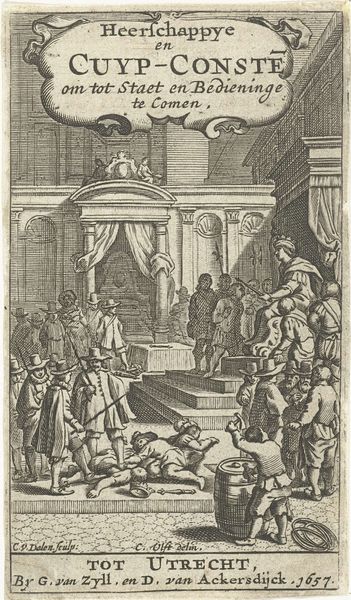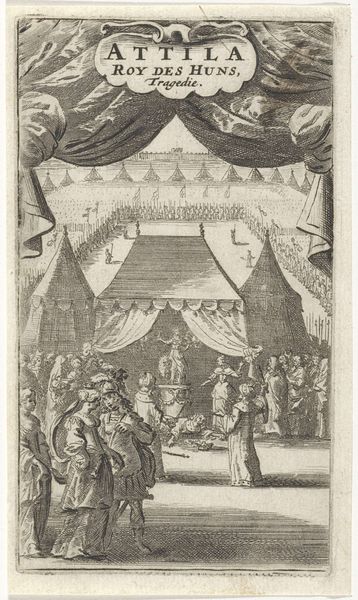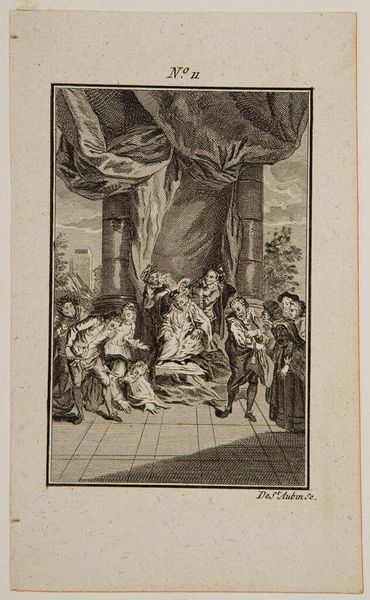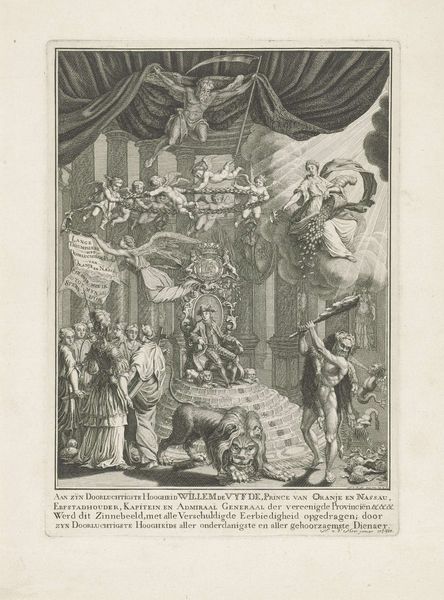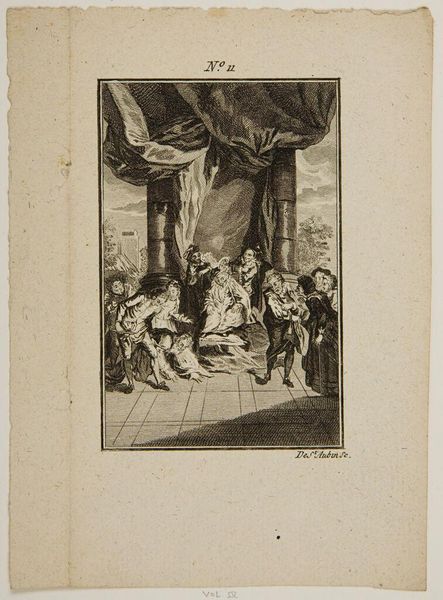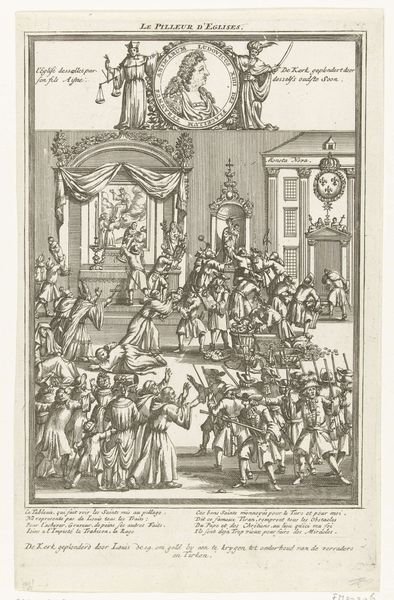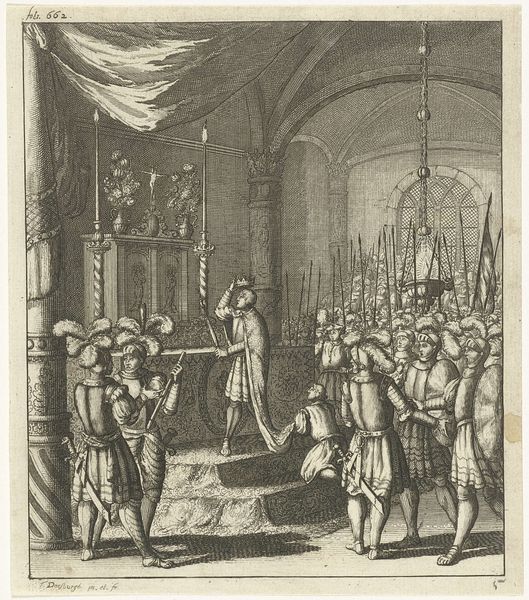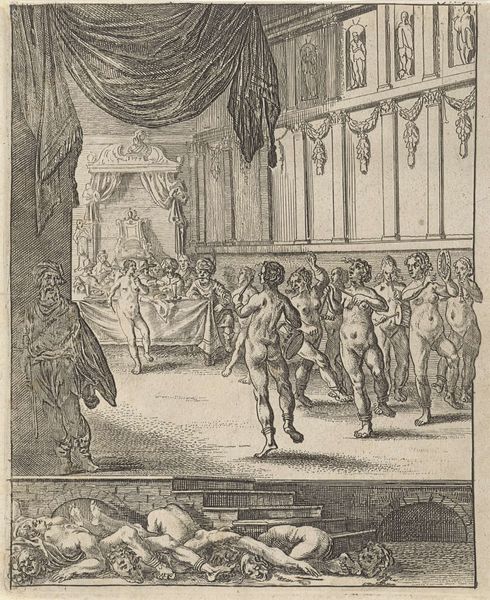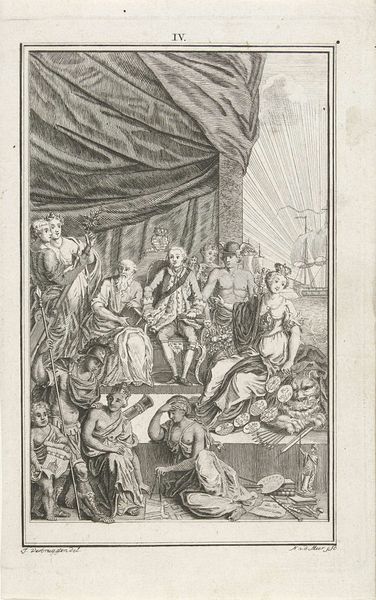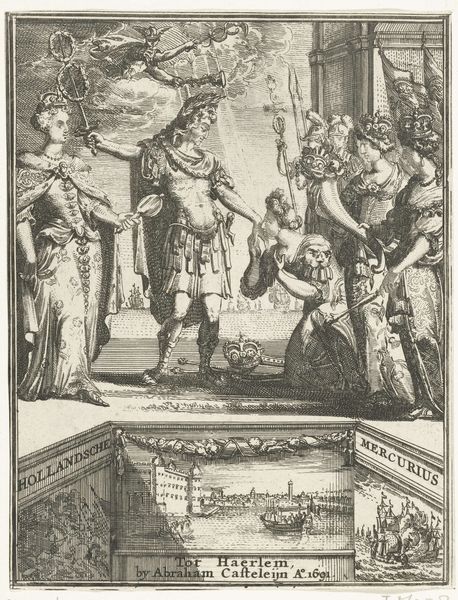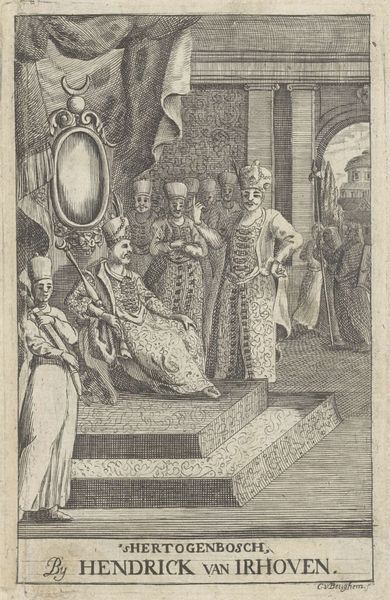
print, engraving
#
baroque
# print
#
pen sketch
#
pencil sketch
#
figuration
#
pen-ink sketch
#
pen work
#
history-painting
#
engraving
Dimensions: height 117 mm, width 66 mm
Copyright: Rijks Museum: Open Domain
Curator: This engraving by Abraham Dircksz. Santvoort, created in 1666, is entitled “Drie huwelijken,” which translates to "Three Marriages." It resides here in the Rijksmuseum. What are your first thoughts on seeing it? Editor: Immediately, I'm struck by the elaborate theatricality of the scene. The heavy drapes, the grand hall—it feels like more than just a wedding; it's a staged event. It feels exclusionary somehow. Curator: You pick up on something very important there. These were often portrayals of civic life elevated to morality lessons. What the work depicts or tries to is not the common marriage, but perhaps the grand aspirations of the Dutch Republic. Editor: And is it common to present more than one wedding ceremony in the same scene, as a single picture? I notice the title specifies three marriages... Are we intended to see all of these marriages equally? Is that even possible? Curator: Good question. By placing the multiple ceremonies in the same engraving, it subtly draws parallels or distinctions between the unions. Each wedding probably signifies the forging of an alliance of familial kind. And this reflects the intricate web of power and commerce that was a very prominent force during that time. Editor: It makes me wonder about the experiences of the women involved in these unions. Were they agents in their own lives, or pawns in this grand game of politics and power? I think, it's a celebration of a patriarchal system. Curator: Certainly, patriarchal structures dictated much of societal function, and this scene visualizes the importance of dynastic unions. Yet the active role that the women portrayed could suggest that while constricted by their period in history, it does not mean that they are not participants. This era shows many stories of queens, female traders, authors who left their own marks, with all the difficulties that it meant. Editor: It’s a powerful reminder that these seemingly distant historical depictions still have resonances today, in terms of how we structure partnerships, inherit power. Santvoort’s piece reminds us to look at those ties and the social conditions that generated them. Curator: Precisely, to consider the continuities between the past and the present, while constantly scrutinizing those forces that give rise to structures of power, portrayed here so magnificently.
Comments
No comments
Be the first to comment and join the conversation on the ultimate creative platform.

